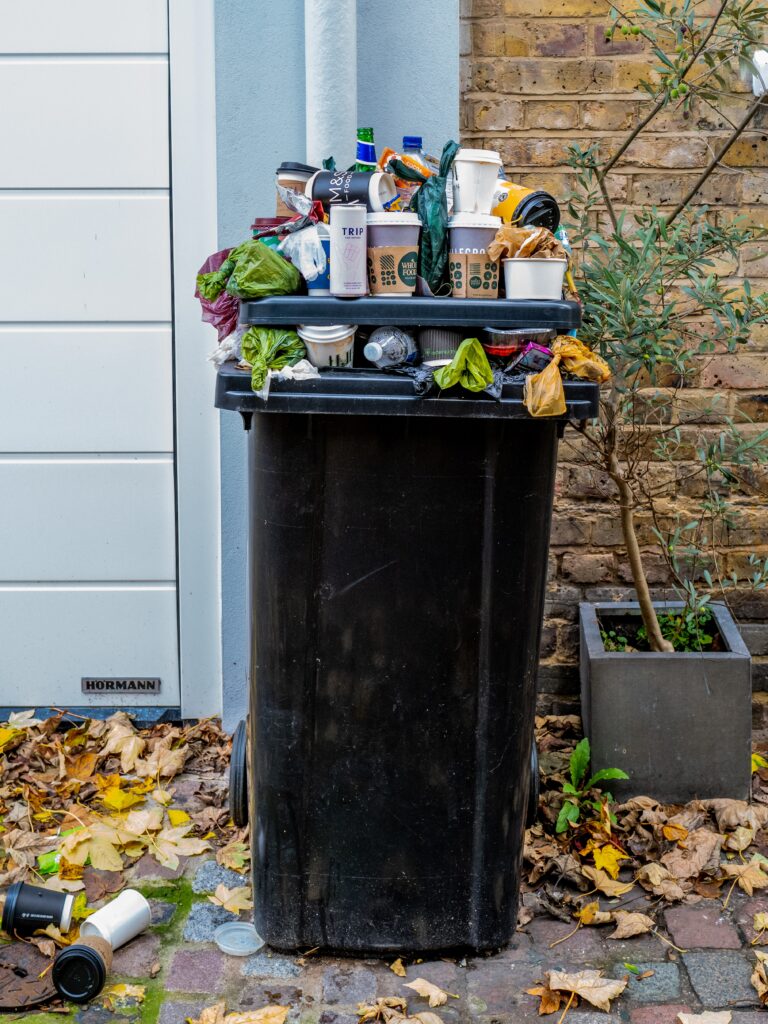
If you’ve recently welcomed a curious, adorable little ball of fur into your home, you may find yourself pondering the age-old question: “How do I litter train a kitten?” Fear not, for we are here to guide you through the process with helpful tips and tricks. You’ll discover that teaching your precious feline friend to use the litter box can be a rewarding and relatively simple journey. So, let’s embark on this adventure together and ensure that your home remains clean and your kitten stays content as they master the art of using the litter box.
Table of Contents
Importance of Litter Training
Litter training is a crucial aspect of owning a kitten, as it not only helps create a clean environment but also prevents accidents and promotes good hygiene. By teaching your kitten to use the litter box, you are ensuring that they have a designated space to relieve themselves, eliminating the need for them to do so in inappropriate places. This article will guide you through the process of litter training, highlighting important considerations for choosing the right litter box and litter, as well as providing tips for introducing your kitten to the litter box and addressing any issues that may arise along the way.
Choosing the Right Litter Box
When selecting a litter box for your kitten, it is essential to consider its size and accessibility. Opt for a box that is large enough for your kitten to comfortably move around in and enter easily. Additionally, the sides of the litter box should be low enough for your kitten to climb in and out without much difficulty. This will ensure that your kitten doesn’t feel overwhelmed or restricted while using the litter box.
There is a variety of litter boxes available, ranging from open trays to covered boxes with entry flaps. The type of litter box you choose depends on your kitten’s preferences and your personal preference for odor control and privacy. Open trays are generally easier to clean, while covered boxes offer more privacy and can help contain odors. It is recommended to observe your kitten’s behavior and make adjustments accordingly if they show a preference for a particular type of litter box.
Another important factor to consider is the number of litter boxes. It is advisable to have one litter box per cat, plus an additional box. This not only ensures that each kitten has their own designated space but also helps prevent territorial issues and eliminates the need for them to share, reducing the risk of accidents. Having multiple litter boxes also means that they are easily accessible to your kittens, even when they are in different areas of your home.

Selecting the Right Litter
Choosing the right litter is essential to achieve successful litter training. There are several types of litter available, each with its own advantages and disadvantages. Clay litter is a popular choice due to its affordability and ability to absorb liquid effectively. However, it may produce more dust and may not clump as well as other litters.
Clumping litter, on the other hand, has the advantage of forming solid clumps when it comes into contact with urine, making it easier to remove and keep the litter box clean. This type of litter can be more expensive than clay litter but offers better odor control. Be sure to select clumping litter that is safe for kittens, as some formulas may contain chemicals that are harmful to their health.
For those looking for an environmentally friendly option, biodegradable litter is a great choice. Made from materials such as recycled paper, corn, or wheat, these litters break down naturally and reduce the environmental impact. Biodegradable litter may also be a suitable option for kittens with allergies or sensitivities to certain types of litter.
Preparing the Litter Box
Properly preparing the litter box is crucial for successful litter training. Begin by placing the litter box in a convenient and accessible location. Choose an area that is quiet and easily accessible for your kitten, allowing them to find and use the litter box without any obstacles or disturbances. Avoid placing the litter box near their food and water bowls, as cats prefer to keep their bathroom area separate from their eating area.
When it comes to lining the litter box, it is a matter of personal preference. Some cat owners prefer to use liners, while others prefer to skip this step. If you choose to use liners, ensure they are securely fastened to the sides of the litter box to prevent any accidents or discomfort for your kitten. It is also important to regularly clean and replace the liners to maintain hygiene.

Introducing Your Kitten to the Litter Box
Timing plays a crucial role in successfully introducing your kitten to the litter box. Begin by showing your kitten the location of the litter box as soon as you bring them home. Take them to the litter box and gently place them inside, allowing them to explore and become familiar with the new environment. Be patient and allow them time to adjust, as some kittens may require more time to feel comfortable using the litter box.
If your kitten does not show immediate interest in using the litter box, gently place them in the box after meals or when you notice signs that they need to relieve themselves. By consistently showing them the litter box and placing them in it at appropriate times, you are helping them create a connection between the box and the act of elimination.
Encouraging Your Kitten to Use the Litter Box
Observing your kitten’s behavior and timing is crucial in encouraging successful litter box usage. Pay attention to signs that your kitten may need to eliminate, such as sniffing the ground or exhibiting restlessness. When you notice these signs, gently place your kitten in the litter box, using positive reinforcement such as verbal praise or treats.
Positive reinforcement plays a vital role in encouraging your kitten to use the litter box. Whenever your kitten successfully uses the litter box, praise them and offer a small reward, such as a treat or gentle petting. This positive association will reinforce their behavior and motivate them to continue using the litter box.
Accidents are bound to happen during the litter training process. It is important to address accidents with patience and understanding. Avoid punishing your kitten for accidents, as this can create anxiety and hinder the learning process. Instead, clean up any accidents promptly and use an enzymatic cleaner to eliminate any lingering odors. Address any issues or challenges with patience, knowing that consistency and positive reinforcement will eventually lead to success.

Maintaining and Cleaning the Litter Box
Proper maintenance and regular cleaning of the litter box are essential for your kitten’s comfort and hygiene. The litter box should be scooped at least once a day to remove solid waste and clumps. This not only eliminates odors but also provides a clean space for your kitten to use whenever the need arises.
In addition to daily scooping, complete cleanings should be performed regularly. Depending on the type of litter used, complete cleanings may be required weekly or every few weeks. During a complete cleaning, empty the litter box, wash it with mild soap and warm water, and thoroughly dry it before refilling with fresh litter. This helps maintain a sanitary environment and prevents odor buildup.
When cleaning the litter box, it is important to avoid using strong chemicals, such as ammonia-based cleaners, as these can be harmful to your kitten and deter them from using the litter box. Stick to mild, pet-safe cleaners to ensure their safety while keeping the litter box clean and odor-free.
Dealing with Litter Box Problems
Litter box problems can arise even with the most diligent litter training efforts. It is important to approach these issues with patience and without resorting to punishment. Punishment can create fear and anxiety in your kitten, potentially exacerbating the problem rather than resolving it.
If your kitten starts exhibiting litter box issues, such as eliminating outside of the box or avoiding it altogether, it is crucial to address any potential medical issues first. Urinary tract infections or other medical conditions may cause discomfort or pain during elimination, leading to avoidance of the litter box. Consult with your veterinarian to rule out any underlying health concerns and seek appropriate treatment if necessary.
If there are no medical issues, consider potential environmental factors that may be causing the litter box problems. Changes in their routine, the introduction of a new pet, or stressors in the household can all contribute to a breakdown in litter box usage. Address these factors and provide a calm and comfortable environment for your kitten.
If litter box problems persist or become challenging to manage, seeking professional help from a veterinarian or animal behaviorist is recommended. They can provide additional guidance and strategies tailored to your specific situation, helping you and your kitten overcome any hurdles.
Training Tips for Multiple Kittens
When litter training multiple kittens, it is important to provide individual litter boxes for each kitten, plus one additional box. This ensures that they each have their own designated space and prevents any territorial issues that may arise. It also eliminates the need for sharing, reducing the risk of accidents.
Social learning can play a significant role in litter training multiple kittens. One kitten observing and learning from another can help accelerate the training process. Consider having the litter boxes placed in a communal area where the kittens can interact and observe each other using the litter box. This can create a positive learning environment and make litter training more efficient.
A staggered training approach can also be beneficial when litter training multiple kittens. Begin by focusing on one kitten at a time, taking them through the training process outlined in this article. Once the first kitten has successfully learned to use the litter box, move on to the next one. This gradual approach allows each kitten to receive individual attention and ensures that they have a clear understanding of the litter box concept before moving on to the next training session.
Transitioning from Litter Box to Outdoors
If you eventually plan to transition your kitten from using the litter box indoors to going outdoors, it is essential to approach this process gradually. Start by gradually moving the litter box closer to an outdoor access point, such as a door or window. This helps your kitten associate the act of elimination with the outdoor environment.
Encourage outdoor exploration by gradually allowing your kitten supervised access to an outdoor area. Start with short periods in a secure and enclosed space, gradually increasing their time outside as they become more comfortable. This gradual transition allows your kitten to gradually become familiar with the outdoor environment and understand that it is an appropriate place for elimination.
Supervision and safety measures are crucial when transitioning your kitten from the litter box to the outdoors. Ensure that your outdoor area is secure, free from potential dangers, and supervised at all times. This will help keep your kitten safe while allowing them to enjoy the benefits of outdoor exploration.
In conclusion, litter training is a crucial aspect of owning a kitten, creating a clean environment, preventing accidents, and promoting good hygiene. By choosing the right litter box and litter, introducing your kitten to the litter box, encouraging their use, and maintaining cleanliness, you can successfully litter train your kitten. Remember to address any problems with patience and seek professional help if needed. With consistent training and a positive approach, your kitten will become a pro at using the litter box, leading to a happy and harmonious living environment for both of you.
